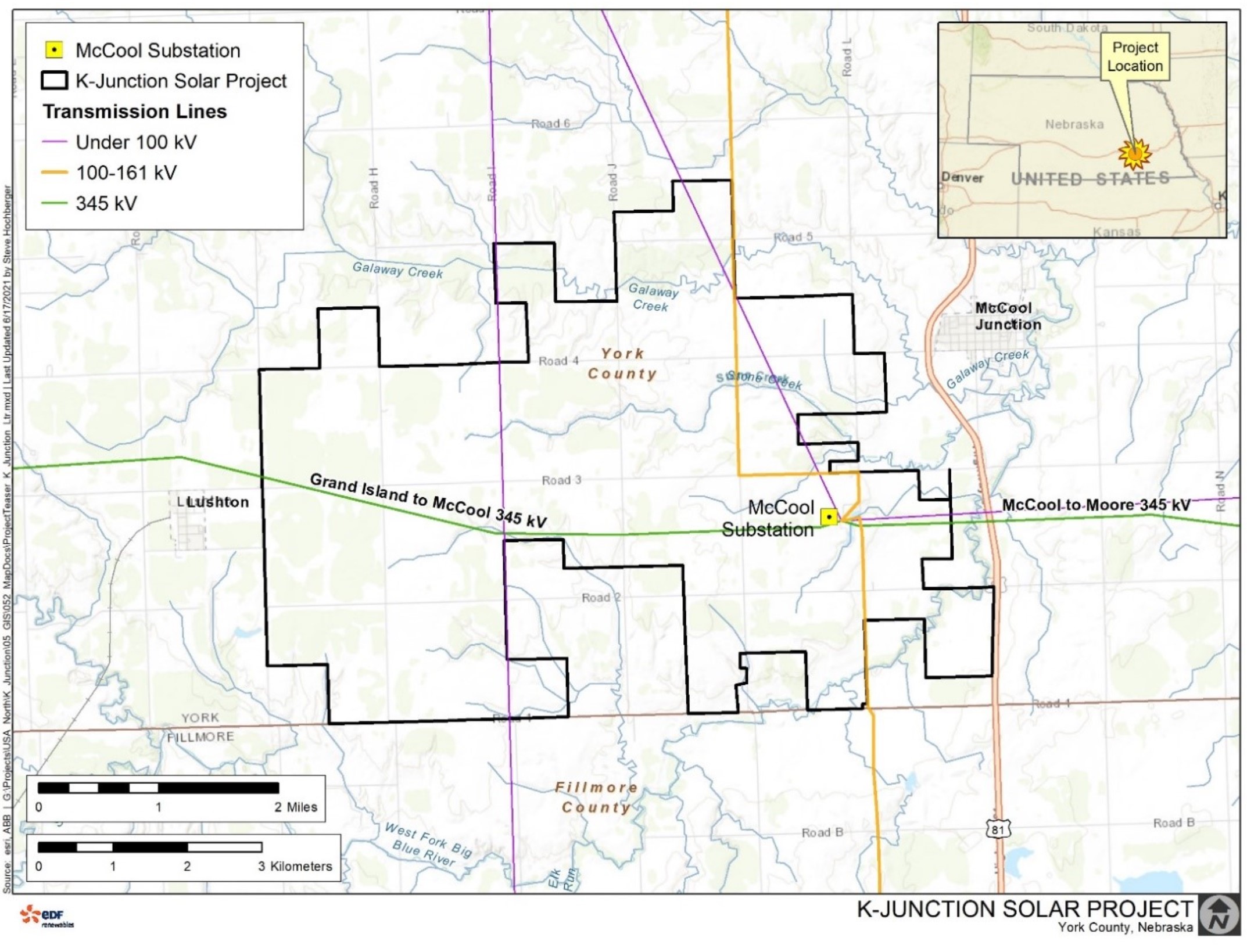BIG CONCERNS IN NEBRASKA
Protect Nebraska Counties from IRRESPONSIBLY PLACED Industrial Utility-Scale Solar Facilites
Nebraska Citizens Take Action, Raise Your Voices…NOW
Our rural neighborhoods and communities are being besieged by energy companies who are aggressively securing as much agriculturally zoned land as they can in our counties to build large, utility-scale, industrial solar facilities.
Why in our neighborhoods? Because its cheaper for energy companies to use our rich agriculturally zoned land to take advantage of lower development costs. Our County Commissioners are, at this very moment, drafting new Utility-Scale Solar Regulations in anticipation of these massive projects moving in on top of us.
It is critical to get involved NOW if you want to preserve your Nebraska quality of life,
our beautiful rural land, communities and wildlife habitats.
McCool Junction K-Junction Utility-Scale Solar Facility Proposed by EDF Renewables
Who is EDF Renewables?
EDF Renewables is the global renewable energy affiliate of the Group. Present in 20+ countries, under the brand EDF Renewables, the company develops, builds and operates renewable power plants.
If completed, the 310 MW K-Junction Utility-Scale Solar Project will cover 3,000 acres of agriculture land and it would be one of the largest Utility-Scale Solar Power Facilities in the U.S. EDF Renewables plans to begin construction in 2024 and interconnect the power facility to the McCool Junction Substation operated by NPPD.

YORK COUNTY MEETING INFORMATION
Check back soon for details.
Help Nebraska County Commissioners Craft STRONG Solar Regulations…No Regrets!
Nebraska County Officials are elected to protect their residents, STRONG SOLAR REGULATIONS are critial legislation. Regulations that clearly and consistently outline the provisions that are required by our counties to be included in all Utility-Scale Solar project proposals submitted by all energy companies.
EDF Renewables and energy companies in general make a lot of promises when it comes to Utility-Scale Solar: increased revenue, jobs, little to no impact on the environment and property values. Nebraska County Solar Regulations that clearly define the provisions of a developer’s obligations will protect and preserve our quality of life, our agricultural heritage, the character of our counties and our environment.
Protecting Agricultural Land, Wetlands & Waterways
Strong and consistent County Solar Regulations will clearly govern the siting of industrial utility-scale solar power facilities. Avoidance of agricultural land, wetlands and waterways is important. Incentives should be considered for guiding Utility-Scale Solar Power Facilities to brownfield and existing industrially zoned sites FIRST!
Preserving Historical Sites
Did you know there is a ton of history right under your feet? Nebraska counties are full of historic sites that are worth preserving and protecting. Given the number of historic sites in Nebraska and around the country, we advocate for NO Utility-Scale Solar on historic sites.
Limiting Utility-Scale Solar Facility Size
Strong Regulations will clearly define the acceptable size of a solar power facilities allowed in our counties: Total acreage of a project, number of acres of panels, total acres allowed in a county, and distance between projects.
Solar Facility Setbacks and Buffers
EDF Renewables and other energy corporations claim that solar power plants do not negatively impact property values. If that were true, impacted landowners would not be opposing these projects.
In order to protect adjacent landowners and protect the rural character of our communities, regulations must include generous, clearly defined setbacks and landscape buffers.
Decommissioning Regulations to Protect Counties and Taxpayers
A strong Decommissioning Plan specifies what must happen when the Utiltiy-Scale Solar Facility is no longer operating.
Utiltiy-Scale Solar Developers will try to ignore and/or downplay decommissioning.
Decommissioning massive solar projects is a very important issue for our counties. Developers will try to claim that the net salvage value of their “dead” Solar Facility will exceed the cost of decommissioning.
Utiltiy-Scale Solar Developers usually sell their interest in their Solar Plant after 2 – 3 years of operation. This means that they will be long-gone by the time decommissioning comes around
Did you know? Ownership of Utiltiy-Scale Solar Facilities turns over many times during the life of a system.
Most solar developers/operators are LLCs. They can walk away from their Solar Projects whenever they want to.
